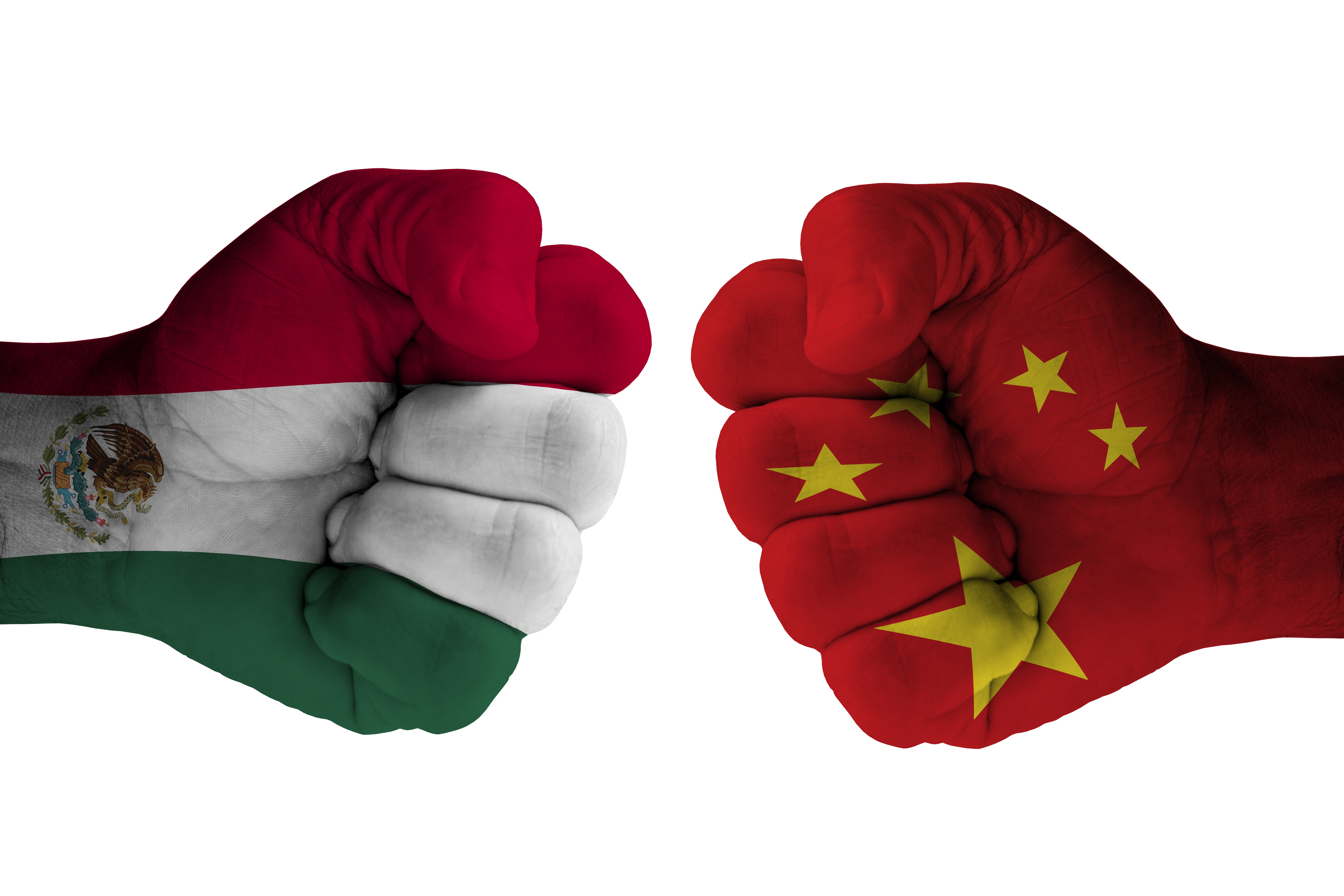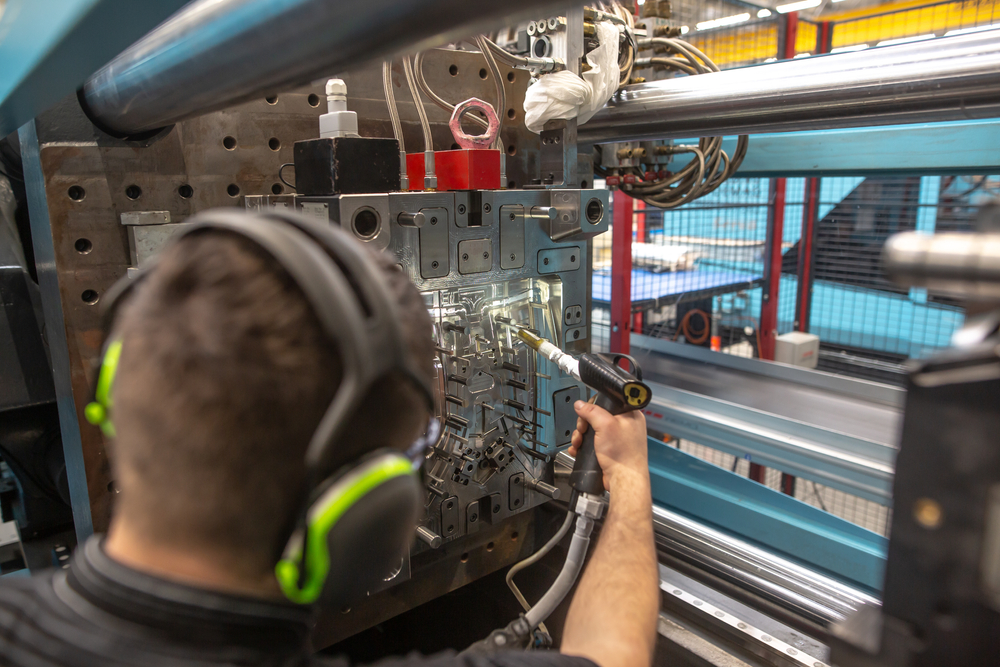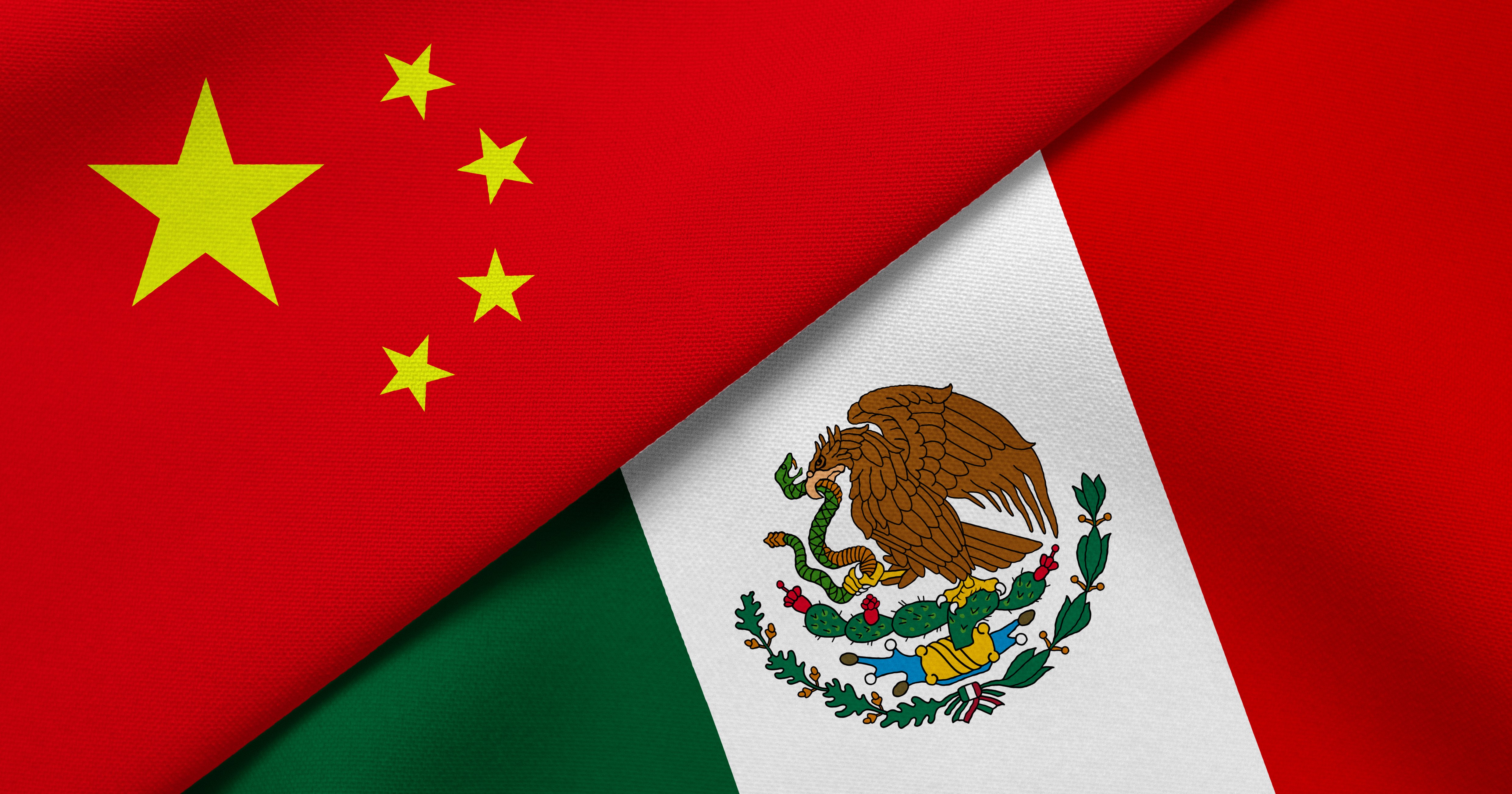The incentives of operating close to the US, the world’s largest consumer base, have fully tipped the scales in Mexico’s favor. An increasing number of companies, including many Chinese companies, have made the tough decision to pull manufacturing out of China and into Mexico to support the US market better. These manufacturers find that Mexico’s dense industrial clusters, skilled workforce, and tax and trade incentives more than offset the cost of moving a major production operation.
That said, moving manufacturing to a new country is a challenging process that can carry some risks. To help you gauge whether a move might be right for you, we have outlined below:
- The top reasons companies are moving out of China and into Mexico.
- Factors to consider when planning to exit your manufacturing operation in China.
- Strategies for speeding your launch into Mexico.
6 reasons why manufacturers are moving from China to Mexico
There are several reasons manufacturers looking to move out of China might consider establishing operations in Mexico. Among them are the following:
- Preferential tariff treatment. The U.S.-Mexico-Canada Agreement (USMCA) incentivizes manufacturing in North America for companies that wish to sell to the massive U.S. market. By setting large Regional Value Content (RVC) requirements for the amount of North American-produced content, a range of products must be incorporated to qualify for duty-free trade. For example, in the automotive industry, the USMCA requires that 75% of a vehicle's components be made in North America to qualify for tariff-free access to the U.S. market.
- IMMEX tax incentives. Under this government program, companies manufacturing in Mexico and exporting their goods within a set timeframe are allowed “temporary” importation of production materials and assets without paying the 16 percent value-added tax on those items. Companies must be registered under the IMMEX and IVA programs to take advantage of these significant cost savings.
- Faster, cheaper shipping. By sourcing products from Mexico rather than Asia, U.S. companies save significantly on shipping costs and time. The shipping cost per cubic foot to Chicago from China is $3.66, compared to $1.84 from Mexico, representing a 50% saving. Similarly, the cost per cubic foot to Los Angeles is $1.33 from China versus $0.92 from Mexico, a 31% saving. The average days of supply in transit are dramatically reduced from 36 days from China to just two days from Mexico, highlighting a 1,700% advantage.
Costs drop even more steeply for companies able to provide de minimis shipments under Section 321 of the U.S. Code of Federal Regulations. Under Section 321, companies can transport shipments with a maximum value of $800 into the United States duty-free, as long as the total value of shipments by one person does not exceed $800 per day.
Moreover, companies moving goods from Mexico to the U.S. have redundancy in highway, railway, and sea transportation options. This enables manufacturers to pivot rapidly in the face of potential disruption.
- Advanced supply chain. Manufacturers moving out of China and into the growing low-cost manufacturing hubs cropping up in many Southeast Asia countries may find these countries are still in the early stages of building the local supply chain. Mexico, in contrast, has more advanced manufacturing supply chains supporting a range of complex industries, including automotive, aerospace, electronics, and medical device manufacturing. Its hubs bring together component manufacturers that together support the low-cost local assembly of more complex items.
- Inexpensive and experienced workforce. Once the low-cost destination of choice, China’s wages are no longer the competitive advantage they once were. Over the last decade, China has averaged annual increases of more than 7% in manufacturing wages. Inexpensive and experienced workforce. Once the low-cost destination of choice, China's wages are no longer the competitive advantage they once were. Over the last decade, China has averaged annual increases of more than 7% in manufacturing wages. Moreover, the maturing Chinese manufacturing industry is increasingly serving the demands of its own national market, while Mexico's factory workers are becoming more skilled in serving complex manufacturing needs. With factory wages averaging $6.50 per hour, Chinese factories are finding it harder to compete against Mexican wages averaging $4.20 per hour, especially when combined with higher shipping costs and tariffs.
- Free trade agreements. China has 22 free trade agreements connecting it with 29 countries and regional blocs. While it also has bilateral investment agreements with more than 100 countries, the U.S. views these agreements as weaker than the investment treaties it typically seeks to negotiate. Mexico, on the other hand, has 15 free trade agreements that connect it to more than 50 countries across the world. Operating in Mexico enables manufacturers to reap significant trade advantages.
4 reasons why manufacturing in Mexico might not be a good fit
While Mexico offers many advantages for manufacturing, there are some potential drawbacks that companies should consider:
- Availability of Contract Manufacturing Partners. Mexico may not have a sufficient number of contract manufacturing partners that meet specific industry requirements, which can limit the ability to scale production efficiently. Companies with unique or highly specialized manufacturing needs may find it difficult to locate partners in Mexico who can meet their exacting standards. This scarcity can lead to longer search times and potentially higher costs associated with locating and qualifying new manufacturing partners.
- Cost or Availability of Specific Raw Materials or Specialized Sub-Processes. Certain raw materials or specialized manufacturing processes might be more readily available or cost-effective in other regions. For example, if a company relies on specific raw materials that are abundant and cheaper in Asia, they might face higher costs and longer lead times sourcing these materials in Mexico. Similarly, if specialized sub-processes such as advanced electronics manufacturing are more developed in other regions, Mexico might not offer the same level of expertise or infrastructure, impacting the overall feasibility and cost-efficiency of manufacturing there.
- Logistics. While Mexico offers numerous logistics advantages, including strong ocean ports, logistics costs could be prohibitive if you still rely heavily on an Asian supply chain. Companies that depend on components or raw materials sourced from Asia may incur significant shipping costs and longer lead times when importing these goods to Mexico. Additionally, the complexity of managing a transcontinental supply chain can introduce risks and inefficiencies, such as customs delays, increased transportation costs, and potential disruptions. These factors must be carefully evaluated to ensure that the logistical advantages of manufacturing in Mexico outweigh these potential challenges.
- Lack of Proprietary Management Manufacturing Expertise. For companies that are not vertically integrated, finding suitable contract manufacturing in Mexico can be more challenging compared to China. This might necessitate setting up their own factory, which can be difficult if they lack manufacturing expertise or the desire to develop it. Establishing a new manufacturing facility requires significant investment in infrastructure, equipment, and training. Companies without existing manufacturing capabilities may face steep learning curves and increased risks associated with managing production processes, quality control, and supply chain logistics. Moreover, the need to build a skilled management team capable of overseeing complex manufacturing operations can be a significant barrier for companies new to the manufacturing sector.
How to move your production from China to Mexico
Challenges moving production out of China
Shifting your production center isn’t always an easy process. As Rosemary Coates, Executive Director of the Reshoring Institute, explains in an article for Area Development, manufacturers can face some challenges in closing their factories in China. Potential challenges may include:
- Chinese factory operators may dispute ownership of tools and molds purchased by Western manufacturers. To ensure they can export these materials, manufacturers must clearly identify ownership of these assets in a signed contract.
- Chinese employees may expect payment until the end of their employment contract, which typically lasts one to two years. Working with a multinational law firm can help manufacturers meet the terms of these agreements and plan the right time to move manufacturing.
- China’s Commerce Department has issued guidelines governing foreign investors’ withdrawal from China. Foreign manufacturers must inform creditors they will be closing, settle outstanding taxes and debts, liquidate property, de-register the business, and secure an exit permit. Western companies must account for the cost and time required to perform these activities.
While these tasks may seem daunting, there is good news for manufacturers preparing for a move out of China. On the other side of this equation, the Mexican government has put processes in place to simplify and expedite the process of launching manufacturing.
Strategies for launching manufacturing in Mexico
The quickest way to launch manufacturing in Mexico is by working with a shelter service provider that acts as the local employer of record. Mexico’s shelter manufacturing model provides a legal framework for operation and, when working with the right partner, affords manufacturers a wide range of additional services that remove the regulatory and financial burdens of operating in Mexico. This model offers a rapid startup and low risk – and in many cases may help lower costs. There are many variations of the shelter model, so foreign companies have flexibility in selecting the right partner.
Whether working with a shelter company or launching a wholly-owned subsidiary in Mexico, the process will follow a similar course. The latter option may simply take somewhat longer. By partnering with a Mexican shelter company, Tetakawi has found that firms can ramp up production at their Mexican operations within about 90 days.
To launch a manufacturing operation in Mexico, consider the following steps:
- Find or build a manufacturing facility in Mexico. Find or build a manufacturing facility in Mexico. Depending on specific production needs, companies will either construct a new facility or make improvements to a leased property. Many manufacturers find that facilities available for lease fit their space needs and can be appropriately fitted out within one to two months.
- Hire and train your Mexico workforce. Manufacturers new to Mexico may find the recruitment process perplexing. However, with a multi-pronged recruitment plan, insight into expected local benefits, and perhaps the aid of an experienced partner, the process of staffing a new production plant can be achieved within 30 to 60 days.
- Build your supply chain in Mexico. Rebuilding a supply chain may be among the biggest challenges in moving to a new manufacturing location. It’s critical that manufacturers consider alternatives for their product’s Bill of Materials prior to making a move. Manufacturers leaving China will need to find new suppliers that meet the same quality standards. However, more component and material suppliers are launching facilities in Mexico to support industry supply chains. Mexico is home to industry clusters that bring together specific industry supply chains, boosting manufacturing efficiency and innovation through collaboration. Today, Mexico is home to numerous IT centers, aerospace groupings, and automotive clusters, among others.
- Manage logistics. In addressing customs requirements manufacturers will need to classify and value raw materials, components and equipment; review rules and requirements for export; and train personnel in Mexican customs rules and regulations. Companies also will need to research freight and logistics services providers and contract with service providers.
- Production start-up. Once equipment is installed, inventory is in place and workers are trained, it’s time to start producing goods and sending them into the marketplace.
FAQ: How do I build a business case for moving production from China to Mexico?
First, find out if Mexico is right for you:
- Assess whether the manufacturing needs and requirements of your business can be met by the infrastructure, workforce, and supply chain capabilities in Mexico.
Then choose the most appropriate mode of entry:
- Decide whether to set up a wholly-owned subsidiary, partner with a local company, or use a shelter service provider.
Next, choose a location:
- Consider factors such as proximity to suppliers and customers, availability of skilled labor, and logistics infrastructure when selecting a site for your manufacturing operations.
Then estimate costs:
- Calculate the potential costs associated with moving production, including real estate, labor, transportation, and any potential tariffs or taxes.
Finally, make a go or no-go decision:
- Based on your findings, determine if the benefits of moving production to Mexico outweigh the costs and risks. If the analysis is favorable, proceed with the transition plan.
Conclusion
Moving your production from China to Mexico can offer numerous advantages, including preferential tariff treatment, tax incentives, faster and cheaper shipping, advanced supply chains, an inexpensive and experienced workforce, and access to multiple free trade agreements. However, it's essential to weigh these benefits against potential drawbacks such as the availability of contract manufacturing partners, the cost or availability of specific raw materials or specialized sub-processes, logistics challenges, and the lack of proprietary management manufacturing expertise.
By carefully considering these factors and following a structured approach to building your business case, you can make an informed decision about whether relocating to Mexico is the right move for your company. With the right planning and execution, Mexico can provide a competitive edge for manufacturers looking to serve the US market more effectively.
Ready to get started? Contact Tetakawi today.
Subscribe
Sign up and stay informed with tips, updates, and best practices for manufacturing in Mexico.






